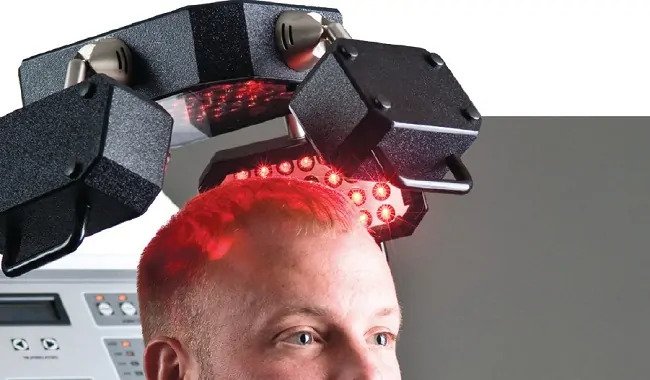Hyperpigmentation is a common skin condition characterized by darkened patches of skin that sun damage, hormonal changes, or skin injuries may cause. However, there may be a solution, which is red light therapy. RLT is a non-invasive laser treatment that uses low-level red light to potentially promote skin healing.
So, have you been struggling with hyperpigmentation and wondering whether red light therapy is the right solution for you? Or does red light therapy make hyperpigmentation worse?
In this article, we’ll explore the latest research on this topic and provide you with expert insights to learn more about the connection between red light therapy and hyperpigmentation. Also, you may discover whether RLT might help with dark spots, melasma, and acne.
Let’s get started and discover!
Does Red Light Therapy Make Hyperpigmentation Worse?
Hyperpigmentation is a common skin condition that can affect anyone, regardless of skin type or age. It occurs when the skin produces an excess of melanin, resulting in dark patches or spots on the skin.
Red light therapy has gained popularity as a non-invasive treatment option for a variety of skin concerns, including hyperpigmentation. This type of therapy uses low-level red light to penetrate the skin and possibly stimulate cellular activity.
However, there has been some debate on whether red light therapy can actually worsen hyperpigmentation. Some studies have suggested that red light therapy may increase melanin production and exacerbate hyperpigmentation. Others have found that it may help improve the condition by reducing inflammation and promoting collagen production.
Overall, while the relationship between red light therapy and hyperpigmentation is still being studied, many individuals have reported positive results from using this therapy to address their skin concerns.

Source: envylightcapsule.com
How Does RLT for Hyperpigmentation Work?
Penetrates at the cellular level
Red light therapy’s long wavelengths may penetrate the skin’s deep tissues where melanocytes, the cells that produce melanin, are located. Overexcited melanocytes can lead to excessive pigment production, causing hyperpigmentation.
Sequential pulsation
Red light therapy for hyperpigmentation also “sheds light” on the skin condition through its distinct successive pulsing. The pattern, which has Morse-code-like characteristics, allows medical specialists or other healthcare workers to adapt the treatment.
May improve the skin’s natural protective barrier
In spite of treating hyperpigmentation, red light therapy can help the epidermis become more resistant to damaging UV rays. The main cause of melasma, future sun damage, is successfully cured as a result.
May prevent early aging
How about aging, another factor that stimulates the creation of melanin? This is another area where red light treatment for hyperpigmentation may be beneficial. According to studies, red light therapy for hyperpigmentation may be effective in skin rejuvenation.
May treat skin injuries
Red light therapy may be a safe and effective treatment for hyperpigmentation. It may treat skin-darkening acne and scars, reduce redness and swelling, as well as stimulate blood flow to the tissues. Plus, it’s non-toxic, non-invasive, and gentle on the skin.
Ultraviolet Light vs. Red Light Therapy in Treating Hyperpigmentation
Surely, most of you have heard about ultraviolet light and its uses. Recently, the benefits of other light therapies, especially red light therapy, have been increasingly noticed.
Namely, this type of therapy is more acceptable because it emits low waves of red light that are not harmful to human health.
So, does red light therapy make hyperpigmentation worse? While ultraviolet waves work to produce melanin and stimulate melanocytes, this is not the case with red light therapy.
Red light therapy acts on mitochondria to produce energy and is, therefore, more often used in cases with hyperpigmentation.
Other Benefits of Using Red Light Therapy
May help with hair loss
Hair loss can be frustrating and affect people’s mental health, especially men. Male pattern baldness, commonly known as androgenic alopecia, is one of the main culprits of hair loss and thinning.
Accordingly, more research has been done on the effect of red light on baldness. The results of such tests have shown that this therapy may have a positive effect on preventing hair loss. Also, it has been shown to possibly help improve hair quality and stimulate the follicles for hair growth.
May contribute to improving skin health
As you age, the quality and elasticity of the skin are lost. In addition, the number of wrinkles increases, and your skin becomes exposed to infections and inflammations.
Several studies have proven that this type of therapy may help create collagen, which is vital for improving skin quality and fighting against wrinkles and infections.
May help with treating oral infections
Red light therapy has shown promise in dentistry for fighting oral infections, as several studies have found positive results in treating bacteria, cold sores, and inflammation in the oral cavity.
Further research is needed for red light therapy to become a regular treatment option for oral infections. Also, dentists are using this method for whitening teeth.

Source: zieringmedical.com
Conclusion
So, does red light therapy make hyperpigmentation worse? RLT may not necessarily worsen hyperpigmentation, but it is important to use it cautiously and responsibly.
To avoid potential negative effects, it is important not to use red light therapy too frequently or longer than recommended.
We hope this article has helped you to learn whether red light therapy makes hyperpigmentation worse and other important information.
Take care!

Hello! I’m Nicky Rodgers.
Almost a decade ago, I got excited about the idea of employing alternative methods like red light therapy to create a healthier life.
To learn more about it, I did my Certified Light Therapist course from Photonic Therapy Institute and started looking into the intricacies of how light therapy influences several bodily processes. Before I knew it, my interest had become an obsession which resulted in this extensive blog.
Here, I offer countless well-researched articles to help you understand the benefits and uses of light therapy. I hope this information gives you a head start in your wellness journey.
